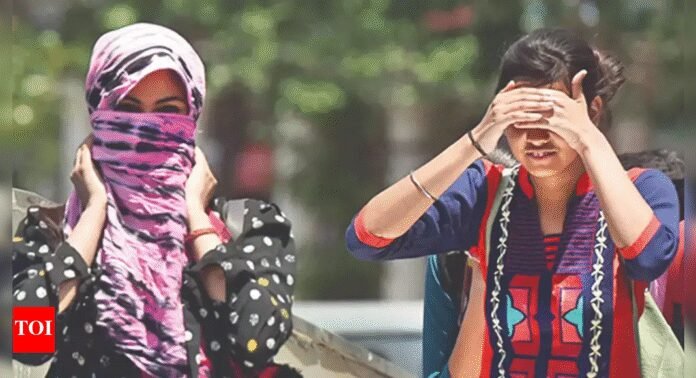NEW DELHI: At least 35,000 lives were lost in India due to exposure to extreme hot and cold temperatures between 2001 and 2019, a new study has found. In 2015 alone, it estimated 1,907 deaths due to a heatstroke and 1,147 because of cold exposure. Data for analysis was taken from the India Meteorological Department and National Crime Records Bureau, among other datasets.
Findings, published in the journal Temperature, show an upward-moving, increasing trend in deaths due to a heatstroke and exposure to cold temperatures.
Lead author Pradeep Guin from O P Jindal Global University, Haryana, said that deaths due to exposure to extreme temperatures are avoidable and that measures to mitigate health impacts need to be put in place.
“With an intense heatwave forecast to hit most of the country this summer and extreme weather events becoming more frequent around the globe as the world warms, there is no time to be lost in raising awareness about the dangers of extreme temperatures and putting in place measures to reduce their impact,” Guin said.
He added, “Support systems exist, but more needs to be done.”
Deaths due to extreme temperatures were found to be more common among men of working age.
During the study period of 2001-2019, deaths due to extreme heat were three to five times higher among men, while those due to extreme cold were four to seven times higher, compared to women, the researchers said.
State-wise, Andhra Pradesh, Uttar Pradesh, and Punjab were found to record the most deaths due to a heatstroke, whereas the most deaths due to exposure to extreme cold came from Uttar Pradesh, Punjab, and Bihar.
The authors wrote, “Between 2001 and 2019, India reported 19,693 and 15,197 deaths due to heatstroke and cold exposure, respectively.”
Guin said, “Deaths due to heatstroke is more significant, compared to deaths due to cold exposure, albeit recording an upward trend.”
Co-author Nandita Bhan from the school of public health and human development at O P Jindal Global University, said the results highlight the urgent need of heat and cold action plans for vulnerable states.
“Several states in India are developing heat action plans that can provide relief through innovative built environment initiatives, and these need study as well as scale-up, including expanding cold action plans across more vulnerable states,” Bhan said.
Previous studies have largely looked at health impacts of extreme temperatures in developed countries and one-off events, such as a heatwave, rather than looking at low- and middle-income countries, the researchers said.
They added that with India experiencing temperature extremes each year, it is important to know places most at risk, which can help in designing measures to keep population safe.
A recently published study in the journal Nature Communications showed that ‘rapid flips’ in temperatures – a switch between hot and cold extremes in a relatively short time – have increased in 60 per cent of the world’s areas over the past 60 years.
It said that because of the limited time available to adapt to temperature changes, these flips could magnify the negative effects of hot and cold extremes on societies and nature, impacting humans and animals, infrastructure and agriculture.









